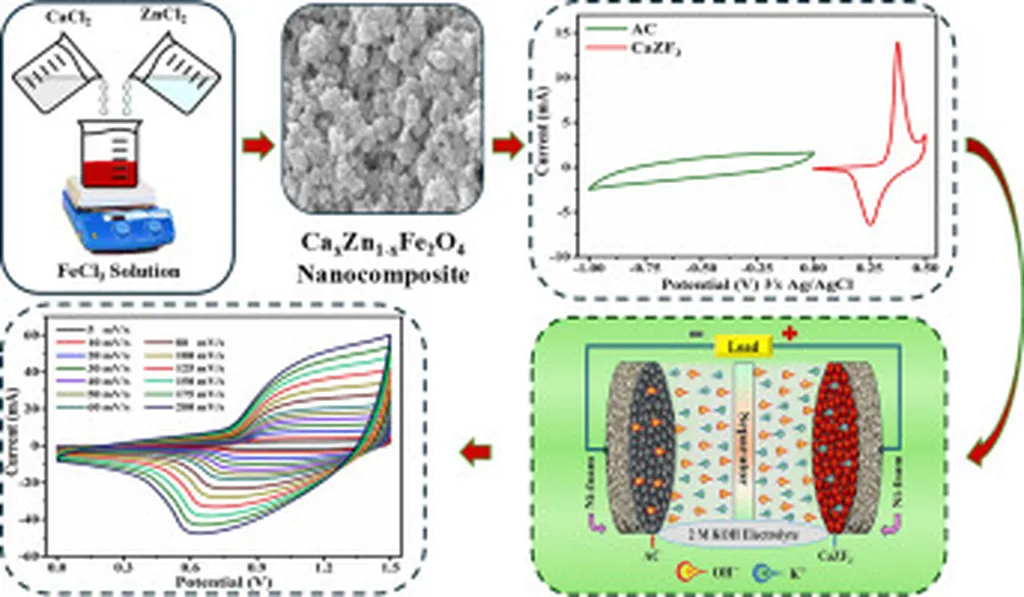In the quest for high-performance energy storage solutions, a team of researchers led by Irfan Sabir from Tianjin University has made a significant stride. Their work, published in the journal *Results in Engineering* (translated from Chinese as “Engineering Results”), focuses on the synthesis and investigation of zinc-based calcium-doped ferrites for advanced energy storage devices. This research could potentially reshape the energy storage landscape, offering a promising avenue for enhancing the efficiency and longevity of hybrid energy storage systems.
The study centers around calcium-substituted zinc spinel ferrite nanocrystals, a novel material that exhibits remarkable electrochemical properties. By doping zinc ferrites with calcium, the researchers were able to create a composite material with enhanced performance characteristics. “The preliminary electrochemical characteristics of our synthesized CaZF nanocomposites suggest a battery-type behavior, which is crucial for energy storage applications,” Sabir explained.
The team employed a co-precipitation chemical approach to synthesize the ternary CaZF composites, with varying concentrations of calcium (x = 0.0, 0.10, and 0.20). They conducted a comprehensive analysis of the material’s structure, morphology, and chemical composition using advanced techniques such as powder X-ray diffraction, Raman spectroscopy, FE-SEM, HR-TEM, XPS, and EDX spectroscopy.
One of the most striking findings of the study is the exceptional specific capacity demonstrated by the Ca0.2Zn0.8Fe2O4 (CaZF3) electrode. At a current density of 0.6 Ag−1, the electrode exhibited a specific capacity of 325.08 Cg−1, indicating its potential for high-performance energy storage. Moreover, the researchers fabricated a supercapattery device using the CaZF3 electrode, achieving a maximum specific energy of 40.5 Wh kg−1 and a power density of 6496.5 W kg−1. The device also showed excellent cyclic stability, maintaining 106.3 % capacity retention and 99.3 % coulombic efficiency after 5550 continuous galvanostatic charge-discharge (GCD) cycles.
The implications of this research for the energy sector are substantial. As the demand for renewable energy sources continues to grow, the need for efficient and reliable energy storage solutions becomes increasingly critical. The development of high-performance hybrid devices based on CaZF nanocomposites could pave the way for more efficient energy storage systems, ultimately contributing to a more sustainable and resilient energy infrastructure.
“This research opens up new possibilities for the design and development of advanced energy storage devices,” Sabir noted. “The exceptional performance of our CaZF nanocomposites highlights the potential of transition metal-based materials in addressing the challenges of modern energy storage.”
As the energy sector continues to evolve, innovations in materials science and electrochemical engineering will play a pivotal role in shaping the future of energy storage. The work of Irfan Sabir and his team represents a significant step forward in this exciting and rapidly developing field, offering a glimpse into the potential of next-generation energy storage technologies. With the findings published in *Results in Engineering*, the scientific community now has a valuable resource to build upon, driving further advancements in the quest for sustainable and efficient energy solutions.

